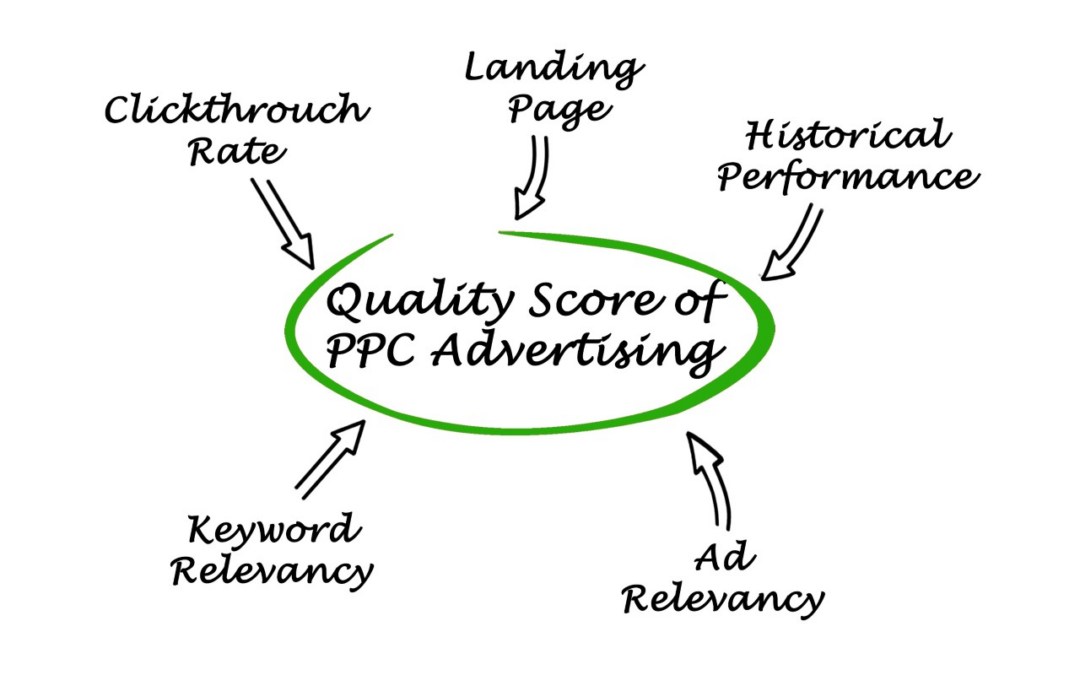Google Ad Words Quality Score
Ahh, the famous quality score.
In previous blog posts, we’ve mentioned we are just obsessed with quality score in our Google Ad Words accounts. Among other factors, of course, we watch and improve quality score around the clock because it’s honestly that important to the profitability of your PPC campaign. As a certified Google Partner, it’s one of the metrics we have to be on top of constantly to keep in their good graces, and our clients campaigns profitable.
The thing about the Google Ad Words quality score is that people are kind of up in the air about what it is, why it matters and the impact it truly has on your account.
Trust us- it matters.
What Is Quality Score In Google Ad Words?
Its a really simple equation when you write it down on paper. It’s a score between 1-10 that Google assigns you, based on how relevant they feel your ads are to the keywords you have picked, and the search terms used to arrive at your ads.
Quality score = landing page experience + ad relevancy + expected CTR rate.
Simple on paper, but not so much in theory. There’s quite a bit more than goes into quality score, but the above three factors are a great starting point to boosting those scores that are any less than 7.
Pro tip: If your score is below 7, you need to be actively boosting it.
Finding Your Quality Score in Your Ad Words Account
Your quality score is found within the keywords tab of your campaigns and ad groups as below.
If you can’t find the quality score tab, no worries. Just adjust your columns settings.
Make sure you select all three components of quality score, to se the full breakdown:
(Don’t worry. Our PPC skills are way better than our drawing on the computer skills. Way better.)
Why Does Quality Score Matter?
The more relevant Google thinks your keywords and ads are, the more they want to show them to search engine users.
Why? Google is still a business, don’t forget, and they want to make sure that they are providing their search engine users with exactly what they’re looking for. Guess what your reward is for having super relevant, useful ads for Google to show their customers?
You pay less overall.
You Pay Less Per Click
You pay less per click on each keyword with a high quality score, which means your budget will get you more impressions and clicks on a daily basis.
You Increase Your Ad Rank
Ad Rank = the position in which your ad is shown on the SERP page, relevant to your competitiors.
(Dont worry – ad rank is next weeks blog.)
Yes, your bid per keyword matters. But an outrageous bid on a keyword will not make up for the fact that you have a low quality score. It’s Google’s way of making sure that high dollars don’t back spammy or irrelevant ads which would just peeve you right off.
A high quality score will decrease your need for a ridiculously high bid. In fact, accounts with tip-top quality scores and lower/moderate bids will have their ads shown in a higher position than accounts with low quality scores and high bids. (It’s the balance of the two that make PPC a tough job to manage.)
Want to know if you can reduce your CPC?
You Make Sure Your Ad Is Seen
Low quality score? Your ad likely isn’t getting seen as much as it should. Clients with existing Google Ad Words accounts have come to us with quality scores that are decreasing their ad exposure by 60%.
That makes us sad.
Your Cost-Per-Acquisition Goes Down
CPA = total cost of advertising / # of new customers per campaign (aka. conversions)
Of course, if your CPC is lower, you get more clicks. And if you get more clicks, you are likely getting more conversions; your odds are increased.
So, within the same monthly budget you are getting more conversions which means you are paying less for every time someone does exactly what you want them to do on your ad.
We love this!
Why Your Quality Score Is Low & How to Boost It
Although there are dozens of factors that go into quality score, we’ve proven that three factors really have the most bearing.
Ad Relevance:
If your keywords have nothing to do with your ad, and vice versa, then your ad relevance is going to be ranked low to moderately at best.
If your keyword is “Google Ad Words” and your ad is for website development, that’s a pretty clear lack of relevancy. But, if your keyword is “Google Ad Words” and your ad is geared towards “PPC Campaigns”, it is still pretty irrelevant to Google. If your keywords are centered around PPC services, make sure your ads are about PPC Services only.
Pro Tip: Use your keywords in the direct language of your ads. <I/I>
Split your ad groups into additional ad groups so that both your keywords and ads speak the same language and wording. For example, in the above instance, you would want to separate your ad group into two- one for PPC services and one for Google Ad Word services.
Use your keywords in both the headlines and text of each ad.
Put your keyword into the display URL of each ad.
Landing Page Experience:
We always like to clarify. This can refer to either a separately built landing page, or your core website. It’s where the ad lands when you click on it.
Do I need landing pages built for my PPC campaigns? We blogged about it. We cleared it up for you.
Is the web page in which your ad lands on relevant to the ads? Is it optimized to show the Google Algorithm that it talks about exactly what your ad states?
Example? We love examples. If your ad talks specifically about furnace repair, redirecting an ad to a general page about furnaces likely won’t give Google (or your viewer) the quickest and best answer about furnace repair. If your ad redirects to a general contact page? Expect to be penalized for landing page experience.
Expected CTR rate:
We’re not going to lie. This is perhaps the toughest component of quality score to manage and optimize.
Expected click-thru-rate is a score given by Google based on how many times your ad is clicked when its shown vs. the click-thru-rate they think you should have. If Google feels you should have a higher CTR than you do on each keyword, your score in this area will be low. And if it’s higher than they think it should be?
Brownie points!
It’s a hard one to manage because the reality of what Google thinks vs. what can be obtained (or even what brings you succes and leads) sometimes don’t align. Expected CTR is one of those things that drives our department here to happy hour on a Friday.
But, there are things you can do to increase your CTR so that it matches Google’s demands as much as possible.
⦁ Make sure your ad extensions are fully optimized.
⦁ Make sure you have the location and call extension on.
⦁ Make sure your ad copy is as inviting as can be (we get it, there’s not a whole lot of room for bells and whistles, but a tweak in language can really boost your CTR rate.)
⦁ Use title capitalization in your ads. It draws the consumers eye to your ads more effectivley and generally looks cleaner.
⦁ Integrate call to actions in your ads. “Call now!” will likely initiate more of a response than not.
Quality Score Is No Joke
It really isn’t.
Google Ad Words is competitive, and a low quality score can sometimes destroy your campaign. Low quality scores will definatley damage the success of your campaign, contribute to high dollar drain and stop you from grabbing the best return on advertising spend.We love saving our clients money, and getting the best return at the best dollar.
As a certified Google Partner, that’s why we are so obsessed with quality score- and you should be too.
Let us obsess about your quality score and save you $$. We mean it.




